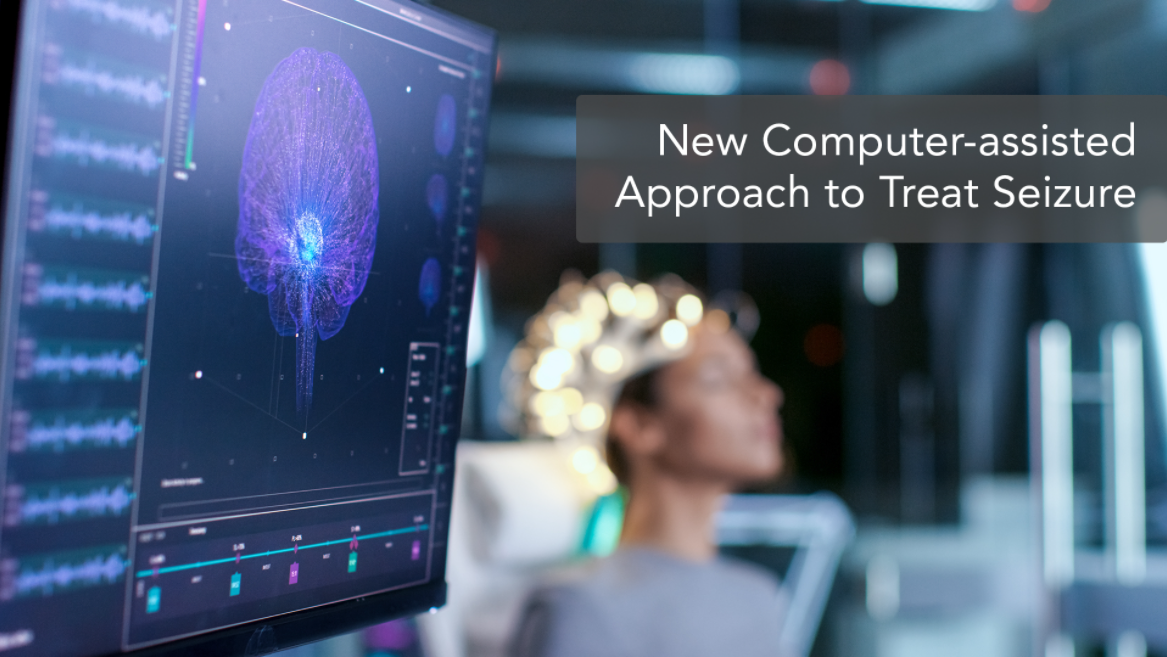New computer-assisted approach to treat seizure
Dr. Syu-Jyun Peng

Assistant Professor, Professional Master Program in Artificial Intelligence in Medicine
Member, TMU Neuroscience Research Center
Member, Research Center for Artificial Intelligence in Medicine


Summary
Using high-frequency oscillations (HFO) in stereoelectroencephalography (SEEG) as a novel approach to identify the epileptogenic zone in patients with temporal lobe epilepsy provides a better prognosis after resection surgery.
Original Research Article: Ictal networks of temporal lobe epilepsy: views from high-frequency oscillations in stereoelectroencephalography
According to a 2021 study, an estimated 70 million people worldwide are affected by epilepsy1, making it one of the most common neurological diseases globally. The cause of a seizure is vaguely recognized as abnormal brain activity, and an absolute cure for it is yet to be discovered. However, interventions, such as prescription of anticonvulsant medications and brain surgery, are more common in managing seizures. Unfortunately, not all types of epilepsy can effectively benefit from these existing interventions. About one-third of the patients with epilepsy do not respond to the prescribed drugs, thus forming a condition called drug-resistant epilepsy1.
Seizure is the result of irregular activities in brain tissue. Most of the time, abnormality starts in a specific (single/multiple zones) brain region. This zone is called the epileptogenic zone (EZ). Identification of EZ is crucial in case patients need brain surgery. The procedure involves measuring the high-frequency brain waves (≥80Hz) associated with irregular neuronal activity during a seizure. These frequencies are called high-frequency oscillations (HFOs), which are detected using a procedure known as stereoelectroencephalography (SEEG). Therefore, HFO is considered to be a biomarker for seizures.
Conventional SEEG is a minimally invasive technology where interpretation is made by simple visual inspection. Often the lack of experience and expertise of the clinician leads to biasness or error in judgement. A research group at Taipei Medical University (TMU) came up with an innovative solution, Auto Segmentation App. for Predication of Arteriovenous Malformation (ASAP-Cerebral AVM), to control the limitations by using computer-assisted quantitative analysis. The innovation integrates the conventional diagnostic technique with artificial intelligence (AI) based analysis to produce a better and more reliable diagnosis.
In 2020, the ASAP-Cerebral AVM received its first international recognition by winning an award at the 14th International Exhibition of Inventions in Warsaw, Poland. The innovation can automatically detect the site of vascular malformation in the brain tissue where the electrodes are to be inserted when attempting epilepsy intervention. Following the clinical preliminary verification completion, it also received its patent from China (I680744). This newly improved high precision pre-surgical intervention not only makes brain surgery safer for the patients, but its ability to reconstruct clinically accurate 3D brain structure promises to benefit a broad range of other brain-related diseases. Among its unique features are the potential to provide clear imaging beyond just the surface of the brain, instead, extending its mapping range to include the brain’s deep interiors, which were impossible under the conventional approach. Thus, clearly defining its application in neurodegenerative disease research and many more.
Compared to the West, the integration of A.I. in medical imaging is still at its infant stages for Taiwan. Yet, it is not surprising to see the country’s researchers driving the adoption and advancement of such technology, given the excellent track record of Taiwan’s booming computing and information processing capabilities. It is strongly recommended that these capabilities be combined with robust clinical resources to boost the development of related upstream and downstream industries to further advance Taiwan’s A.I.-medtech industry. Given the ambition, it is essential to train computational science experts and clinicians to develop medical software that facilitates more AI medical-assisted diagnosis projects. Such progress would encourage more medical institutions to participate and cultivate talents in the A.I. medical equipment industry. Moreover, hospitals should incorporate cloud platforms to lower hardware thresholds, gain credible and rich data from medical institutions, utilize hospital databases to construct models, and increase clinical studies to enhance the future development space of A.I. medical imaging diagnosis manufacturers.
In conclusion, A.I.-based innovation in the field of medicine improves the accuracy, precision, and reliability of interventions. As proven by the research outcomes, whether it is the novel approach of using high-frequency oscillations (HFO) in stereoelectroencephalography (SEEG) or the invention of ASAP-Cerebral AVM, efficient diagnostics can now be readily provided in regions that lack skilled healthcare workers. Such successful attempts of incorporating A.I. into brain imaging technology serve as a good indicator of TMU’s contribution in propelling the nation’s aspiration to perform exceptionally in terms of the United Nations’ 3rd and 9th Sustainable Development Goals, Good Health and Well-Being, and Industry, Innovation and Infrastructure. With that said, the implementation and commercialization of these promising technologies will require open acceptance among practitioners and careful resource allocation by public and private authorities.
Reference:
1. Cai Z, Sohrabpour A, Jiang H, Ye S, Joseph B, Brinkmann BH, Worrell GA, He B. Noninvasive high-frequency oscillations riding spikes delineates epileptogenic sources. Proc Natl Acad Sci U S A. 2021 Apr 27;118(17):e2011130118. doi: 10.1073/pnas.2011130118. PMID: 33875582; PMCID: PMC8092606.
2. Stafstrom CE, Carmant L. Seizures and epilepsy: an overview for neuroscientists. Cold Spring Harb Perspect Med. 2015;5(6):a022426. Published 2015 Jun 1. doi:10.1101/cshperspect.a022426.
3. AI & the sustainable development goals: the state of play. 2017. 2030Vision. Retrieved from: https://assets.2030vision.com/files/resources/resources/state-of-play-report.pdf. Retrieved on: June 2, 2021.
For interviews or a copy of the paper, contact Office of Global Engagement via global.initiatives@tmu.edu.tw.







